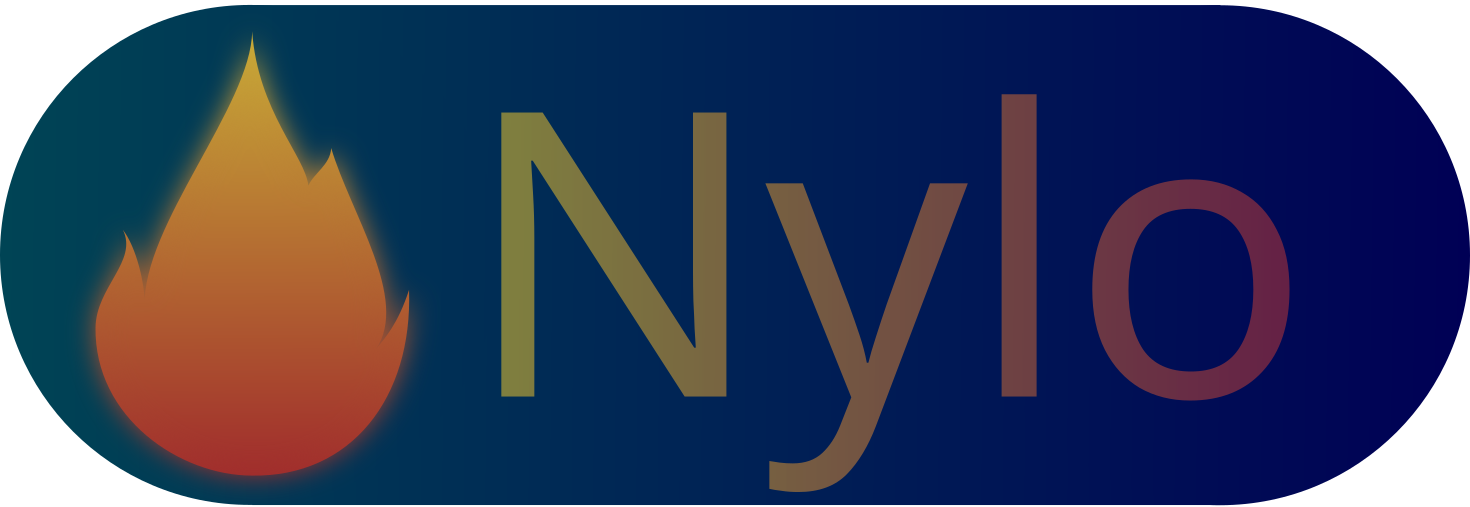Nylo is a declarative programming language. It takes some constructs from functional and logic paradigms, but it’s really a new paradigm itself. It aims to be simple and clear, but powerful. It provides an easy way to make assertions on the data a function is working on. It also gives you the possibility to define standard behaviour if asserts fail.
fib: (
n: int
prevs: fib(n: n-1) + fib(n: n-2)
result: if(cond: n<2, then: n, else: sum_prev_fibs)
-> result
)
This repo contains the development version of the proof-of-concept of the programming language. The poc should be finished on the 25th of May, but due to complications in the type and overloading systems, it might slip further.
As soon as the proof-of-concept is finished and refined, the work on the actual interpreter will start. It will be written in Go/Rust/Ida.
Nylo aims to be clear enough to be used to markup or configuration files. An example can be found on http://niccolo.venerandi.com .
grades: (
first_semester: (
math: 7
science: 9
language: 6
)
second_semester: (
math: 8
science: 8
language: 7
)
)
numbers: (
high: (
4201337,
3290941,
4129301
)
low: (1, 2, 3)
)
first level: (
enemy life: 100
enemy power: 50
)
second level: (
enemy life: 150
enemy power: 80
)
Any variable can be used by putting ` before and after the name.
symbols: (
`+`: "plus"
`-`: "minus"
)
years: (
`2017`: "kinda cool"
`2018`: "please let's go back"
)
other weird names: (
`(!WOW!)`: "WOW!"
`--> :0 <--`: "WOW!"
)
Nylo has very few constructs. In fact, everything is a structure, which is put in the form of (a: b, c: d -> e)
// Class
point: (
x: int
y: int
)
// Function
double: (
n: int
r: n * 2
-> r
)
// Call
twenty: double (
n: 10
-> r
)
// Namespace
smallnumbers: (
zero: 0
one: 1
two: 2
)
// Enum
traffic_lights: (
green: ()
yellow: ()
red: ()
)
// List
languages: (
"Python"
"Go"
"C"
)
Nylo makes everything explicit, even function calls!
screen.drawings: (
rectangle(
position: point(x: 5, y: 15)
size: point(x: 10, y: 10)
color: (red: 255, green: 0, blue: 0)
)
)
The same thing with pygame is:
pygame.draw.rect(
screen,
(255, 0, 0),
(5, 15, 10, 10)
)
As you can see, Nylo is easier to understand.
Not all arguments has to be passed in the first call. You can use -> to curry.
add: (
a: int
b: int
-> a + b
)
add(a: 1, b: 2) = 3
add_three: add(a: 3 ->)
add_three(b: 5) = 8
Also, not all class proprieties has to be passed in the first call.
point: (
x: int
y: int
)
A: point(x: 5, y: 10)
x_axis: point(y: 0 ->)
y_axis: point(x: 0 ->)
B: x_axis(x: 5)
C: y_axis(y: 10)
You can make function that also works backward:
double: (
n: result / 2
result: n * 2
-> result
)
double(n: 10) = 20
double(n: 10 -> result) = 20
double(result: 20 -> n) = 10
And you can also have multiple ways to define classes:
color: (
r: hex[1:3].base_10
g: hex[3:5].base_10
b: hex[5:7].base_10
hex: '#' & r.base_16 & g.base_16 & b.base_16
)
color(r: 255 g: 0 b: 0)
color(hex: "#ff0000")
color(r: 0 g: 122 b: 54 -> hex)
color(hex: "#c8ec8e" -> r)
No one own this, you can do whatever you want with this code, and you should not care about who made it. Have fun!
